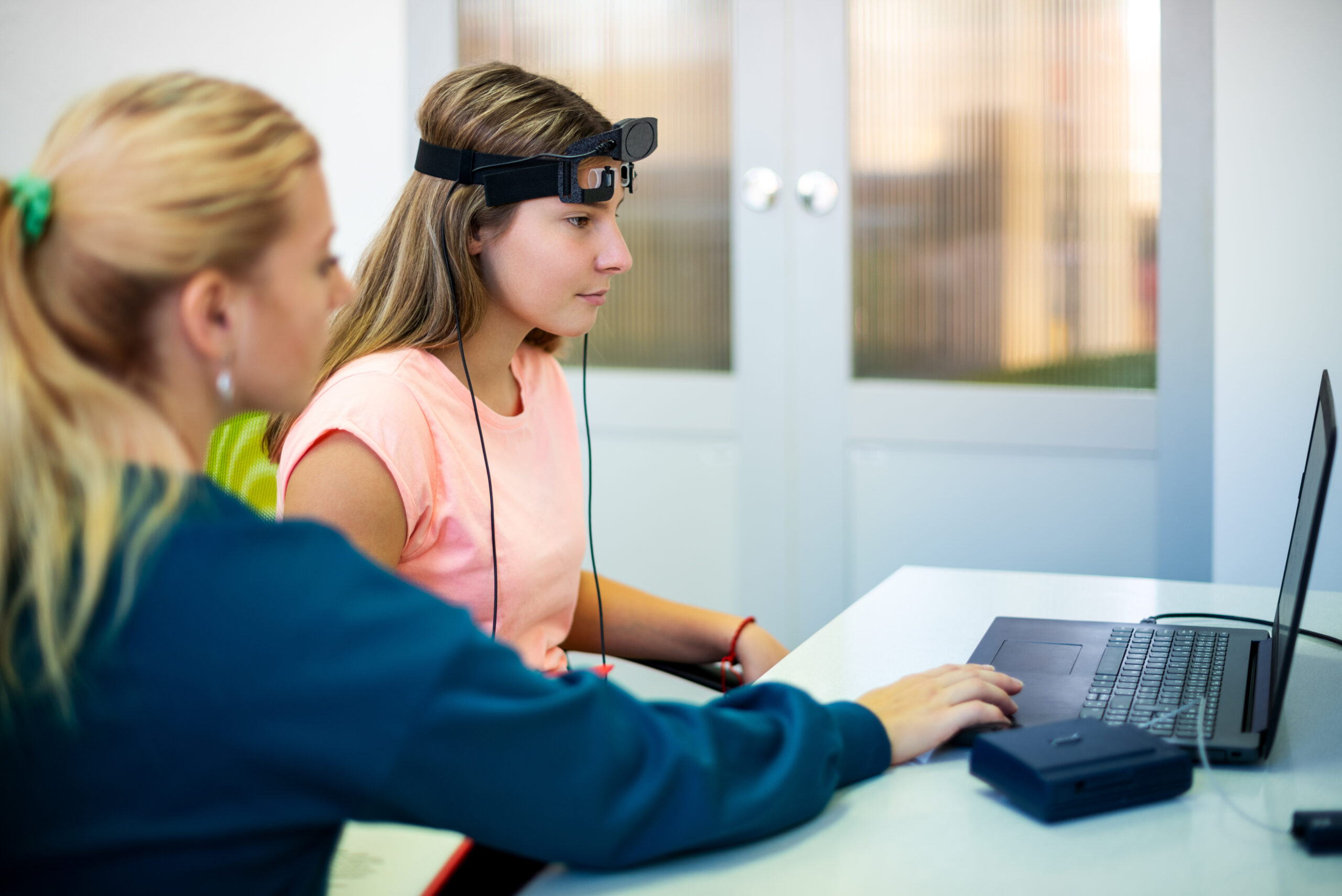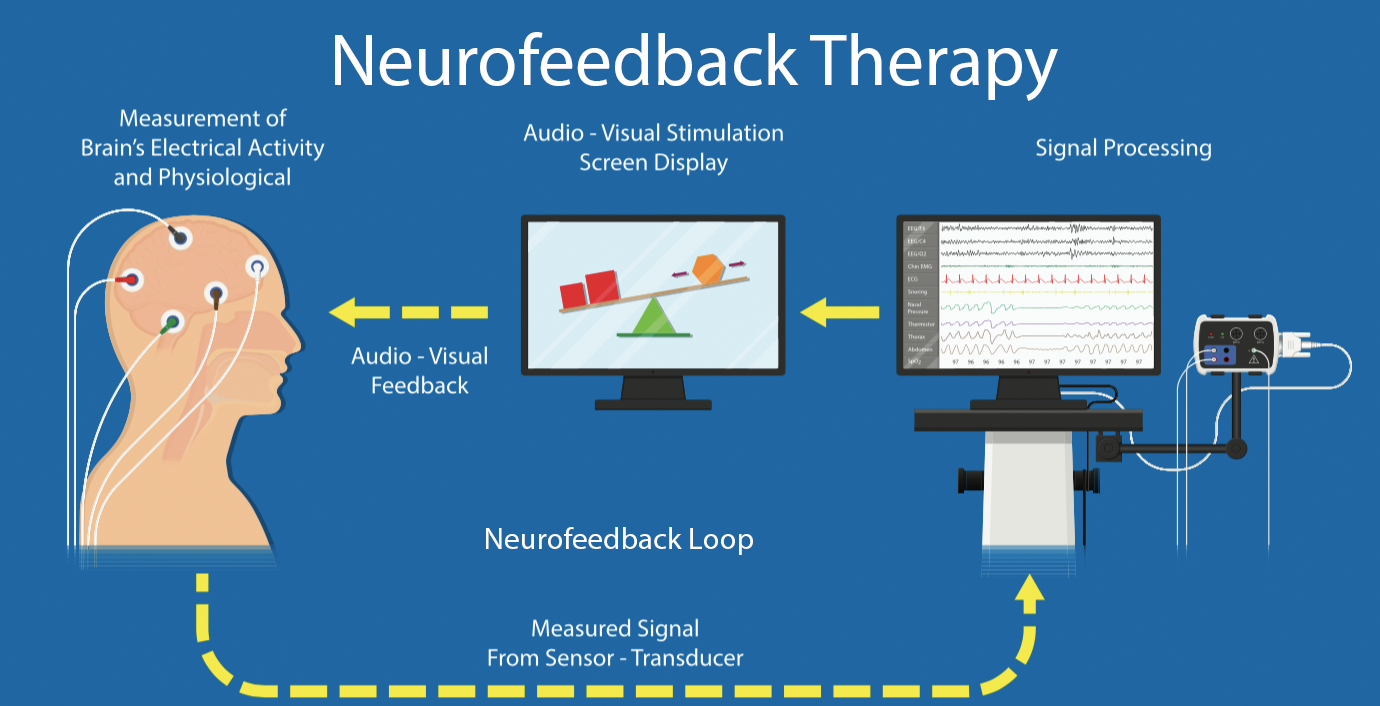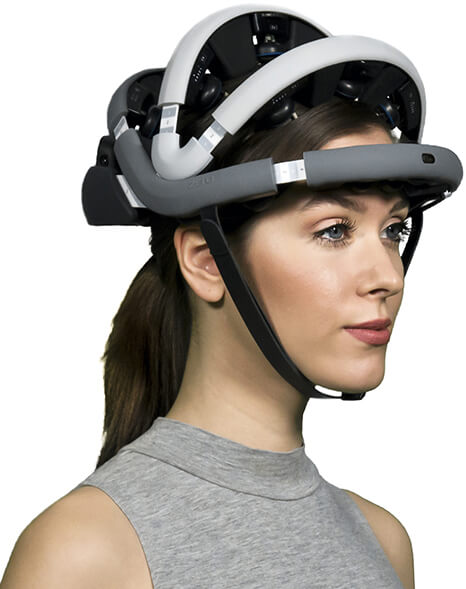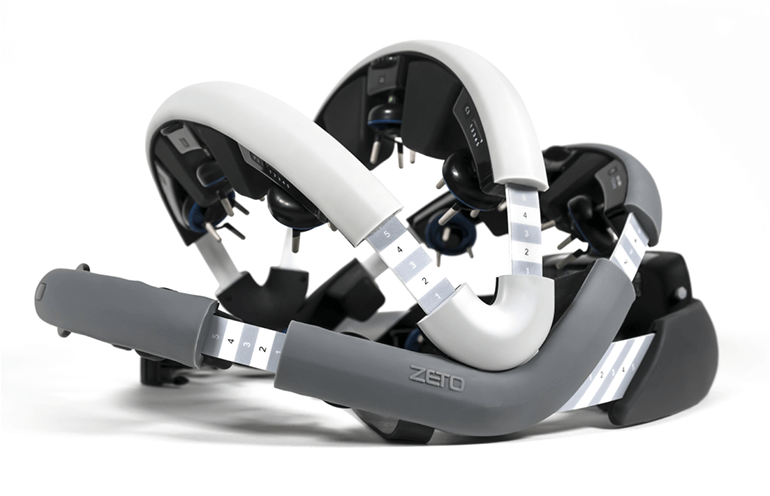Every machine requires some circuitry or motherboard that controls the machine’s functions and operations. Likewise, humans also possess a complex computing system inside the body: the brain. The brain’s inner workings and connections are mysterious. An intricate system of neurons link together to form the brain’s jelly-like morphology.
Advancements in medical science and inventions have improved our understanding of how the brain works. One such invention was electroencephalography, a method and device used to record and analyze the electrical activity occurring inside the brain.
While the first EEG was performed in 1924, the technology is constantly evolving. Today, modern portable EEG devices are changing the way we look at the brain.
In this EEG guide, you’ll learn what an EEG machine is, what an electroencephalography is, how the EEG system operates, and what the various devices are used for.
What is Electroencephalography (EEG)?
Electroencephalography 1, or EEG, is a procedure used to measure and record the electrical activity of the brain in the form of waves. One can monitor the neurophysiological function of the brain while the subject is performing different tasks. Various electrical abnormalities can also be detected with precision.
As we understand the brain better, our EEG technology and the way we interpret the signals of the brain continue to improve. This has led to new ways of performing EEGs, such as wireless EEG systems that allow us to continue to learn the secrets of the brain.
What is an EEG?
Our brain is composed of billions of interconnected neurons. These neurons work by generating electrical potentials in the form of neuronal impulses which travel through the brain. EEG works on the principle of measuring these electrical potentials/voltages generated inside the brain.
What is an EEG Machine?
An EEG machine measures these electrical potentials by recording the differences in voltage between various points using a pair of electrodes. Then, the recorded data is sent to an amplifier.
The amplified data is eventually digitized and displayed on the monitor of the EEG machine as a sequence of voltage values that fluctuate in time. The resulting EEG waveforms from the EEG machine are interpreted to detect signs of abnormality inside the brain.
Parts of an EEG Machine
Essentially, an EEG machine is made up of the following primary device(s):
- Electrodes: The electrodes pick up small electrical brainwaves produced by neurons. These are attached to the scalp with a special paste. Modern EEG machines possess a wearable cap with electrodes pre-installed inside the cap.
- Amplifiers: As the signals travel from the electrodes through the machine, they run through an amplifier that boosts the incoming signal enough to be displayed on the screen.
- Computer Control Module: The amplified signals are processed by a computer.
- Display Device: The processed signals are displayed on the screen to be analyzed by the operator. Before the digital monitoring methods became prevalent, waveforms were plotted with a moving pen on rolls of graph paper.3
An EEG test may be performed either as an outpatient study or as part of your stay in the hospital. Various EEG technology and techniques are used depending on your health condition. Generally, an EEG procedure utilizing EEG technology is done in the following way:
- The patient is asked to relax by lying on a bed or sitting in a chair.
- Various electrodes (between 16, 20, or more) are attached to the scalp using a special electrolyte paste, or the patient is fitted with a cap containing the electrodes.
- The patient is then asked to close their eyes and remain still.
- Generally, an EEG technologist performs this procedure, which may take from 20 minutes to 2 hours, not including the electrode prepping.
- Longer brain monitoring requires the patient to be admitted to the hospital.4
Modern technology has helped make this process easier in recent years. Today, portable EEG devices offer maximum convenience without compromising the quality of the results.
For the EEG operator, this brings down prep times (it’s easy to put on and adjust, and there’s no messy glue or wires to clean up), and for the patient, this offers increased comfort (the soft support pads are gentle on the skin).
Also known as rapid EEGs, these devices make EEG technology much more accessible, allowing more people to benefit from it. The portable EEG machine sends results to the Zeto app, allowing practitioners to access live results from anywhere.
We’re still working hard to understand the human brain, and many mysteries remain, but with each technological improvement in EEG machines, we take a step closer to solving the puzzle of the human brain. Portable EEG machines allow us to study the brain more efficiently, offering benefits to researchers, practitioners, and patients.
What Does an EEG Measure?
At its most basic, an EEG measures brainwaves. Electrical signals generated by the brain are displayed on the screen in the form of waves that vary in amplitude, phase, and frequency.
Fast Fourier Transform (FFT) and other signal processing techniques convert the incoming signals measured by the EEG into useful information that can aid diagnosis. Brainwaves are categorized into four main types based on frequency: Infra-low, Delta, Theta, Alpha, Beta, and Gamma.
Each brainwave is associated with particular functions of the brain. The following paragraphs discuss the various important functions of the brain in correlation with the types of brainwaves.
Delta Waves (frequency ranging from 0.5 Hz to 3 Hz)
Delta waves are slow but loud brainwaves (like the deeply penetrating waves of a drum beat). They are generated during dreamless sleep. Delta waves are intermittent with sleep spindles and sharp waves. When delta waves synchronize between distant cortical areas, they often trigger sharp waves that are considered to be relevant for memory consolidation. 6
Theta Waves (frequency ranging from 3 Hz to 7 Hz)
Theta waves mostly occur during REM sleep. They derive from deep subcortical sources, making them mostly undetectable with an EEG machine. The predominant occurrence of theta is pathological. Normal theta waves are known to be involved in learning and memory. In theta state, we experience dreams comprising vivid imageries and intuitions. 7
Alpha Waves (frequency ranging from 7 Hz to 13 Hz)
Alpha waves occur when the person is in a relaxed, lucid, or calm state. These are mostly found in the occipital and posterior regions of the brain. Whenever someone is asked to close his/her eyes and then relax, the brain is disengaged from any complex cognitive tasks or thinking, and alpha waves are induced. 8
Beta Waves (frequency ranging from 14 Hz to about 38 Hz)
Beta waves refer to the alert, attentive, and conscious state of mind. These are of low amplitude and are also associated with motor decisions. Beta waves are further subdivided into:
- Low-Beta Waves (Beta1, 12-15 Hz): occur while musing
- Mid-Beta Waves (Beta2, 15-22 Hz): occur while engaging intensely in something or actively figuring something out.
- High-Beta Waves (Beta3, 22-38 Hz): occur during complex thoughts and integration of new experiences. Also related to severe anxiety or excitement. 9
Gamma Waves (frequency ranging from 38 Hz to 120 Hz)
These are the fastest of all the brainwaves with the highest frequency and smallest amplitude. Because of the small amplitude and high frequency, they are often contaminated by electrical noise or muscle artifacts.
If gamma waves are captured and measured by EEG, they inform us about information processing in the brain.10 The synchrony of gamma waves between different parts of the brain reflects information exchange between those areas. Gamma waves still remain a mystery as these waves orchestrate the synchronized activity of neurons.
- Low-Gamma Waves (38-60 Hz): Active attentive behavior and cognitive tasks
- High-Gamma Waves (60-120 Hz): Their function is not quite clear, but the predominant occurrence is regarded as diagnostic of epilepsy.
What Does an EEG Test Diagnose?
EEG technology is currently used to diagnose and help treat brain-related disorders.
- EEG is the most powerful and preferred diagnostic procedure for epilepsy.13
- EEG is very helpful in diagnosing sleep disorders such as insomnias, parasomnias, etc.14
- EEG has valuable diagnostic potential for other neurological conditions such as Stroke, Autism, Depression, and ADHD, to name a few.
- EEG is turning out to be the tool for the next generation of Brain-Computer Interfaces and Neural Prosthetics
- EEG can be used to track attention during several activities, to help design strategies to reduce stress and improve focus.15
- EEG has been introduced as a new tool for Neuromarketing studies to help objectively identify participants’ responses.
And the list is growing…
The Bottom Line
The invention of the EEG system opened a new window of learning about the brain. With the EEG system to guide them, neurologists have been able to successfully treat seizures, epilepsy, sleep disorders, and other neurological issues.
As EEG becomes simpler, easier to acquire and interpret, and wireless, even more can be achieved. With new advancements in electronics, cloud computing, and machine learning, it is just a question of how soon.
The future of EEG is bright. Consequently, the advancements in our understanding of the brain cannot be more exciting. Learn more about wet vs. dry EEG tests here.
References
1. Electroencephalogram (EEG) | Johns Hopkins Medicine. https://www.hopkinsmedicine.org/health/treatment-tests-and-therapies/electroencephalogram-eeg.
2. Introduction – Electroencephalography (EEG): An Introductory Text and Atlas of Normal and Abnormal Findings in Adults, Children, and Infants – NCBI Bookshelf. https://www.ncbi.nlm.nih.gov/books/NBK390346/.
3. Wang, C. S. Design of a 32-channel EEG system for brain control interface applications. J. Biomed. Biotechnol. 2012, (2012).
4. Light, G. A. et al. Electroencephalography (EEG) and event-related potentials (ERPs) with human participants. Current Protocols in Neuroscience vol. CHAPTER Unit (2010).
5. Watson, B. O. Cognitive and physiologic impacts of the infraslow oscillation. Frontiers in Systems Neuroscience vol. 12 44 (2018).
6. Harmony, T. The functional significance of delta oscillations in cognitive processing. Frontiers in Integrative Neuroscience vol. 7 (2013).
7. Zhang, H. & Jacobs, J. Traveling theta waves in the human hippocampus. J. Neurosci. 35, 12477-12487 (2015).
8. Klimesch, W. Alpha-band oscillations, attention, and controlled access to stored information. Trends in Cognitive Sciences vol. 16 606-617 (2012).
9. Beta Wave – an overview | ScienceDirect Topics. https://www.sciencedirect.com/topics/medicine-and-dentistry/beta-wave.
10. Gamma Wave – an overview | ScienceDirect Topics. https://www.sciencedirect.com/topics/neuroscience/gamma-wave.
11. Michal T. Kucewicz, Brent M. Berry, Vaclav Kremen, Benjamin H. Brinkmann, Michael R. Sperling, Barbara C. Jobst, Robert E. Gross, Bradley Lega, Sameer A. Sheth, Joel M. Stein, Sandthitsu R. Das, Richard Gorniak, S. Matthew Stead, Daniel S. Rizzuto, Michael J. Kahana, Gregory A. Worrell, Dissecting gamma frequency activity during human memory processing, Brain , Volume 140, Issue 5, May 2017, Pages 1337-1350, https://doi.org/10.1093/brain/awx043
12. Ren, L., Kucewicz, M. T., Cimbalnik, J., Matsumoto, J. Y., Brinkmann, B. H., Hu, W., Marsh, W. R., Meyer, F. B., Stead, S. M., & Worrell, G. A. (2015). Gamma oscillations precede interictal epileptiform spikes in the seizure onset zone. Neurology , 84 (6), 602-608. https://doi.org/10.1212/WNL.0000000000001234
13. Smith, S. J. M. EEG in the diagnosis, classification, and management of patients with epilepsy. Neurology in Practice vol. 76 2-7 (2005).
14. Tan, D. E. B., Tung, R. S., Leong, W. Y. & Than, J. C. M. Sleep disorder detection and identification. in Procedia Engineering vol. 41 289-295 (Elsevier Ltd, 2012).
15. Thompson, T., Steffert, T., Ros, T., Leach, J. & Gruzelier, J. EEG applications for sport and performance. Methods 45 , 279-288 (2008).




